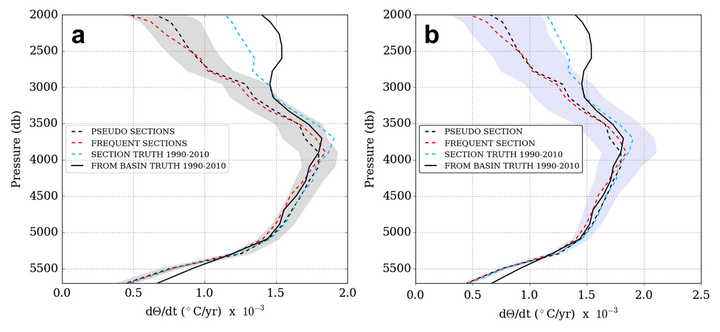Model derived uncertainties in deep ocean temperature trends between 1990-2010

Abstract
We construct a novel framework to investigate the uncertainties and biases associated with estimates of deep ocean temperature change from hydrographic sections and demonstrate this framework in an eddy‐permitting ocean model. Biases in estimates from observations arise due to sparse spatial coverage (few sections in a basin), low frequency of occupations (typically 5–10 years apart), mismatches between the time period of interest and span of occupations, and from seasonal biases relating to the practicalities of sampling during certain times of year. Between the years 1990 and 2010, the modeled global abyssal ocean biases are small, although regionally some biases (expressed as a heat flux into the 4,000‐ to 6,000‐m layer) can be up to 0.05 W/m2. In this model, biases in the heat flux into the deep 2,000‐ to 4,000‐m layer, due to either temporal or spatial sampling uncertainties, are typically much larger and can be over 0.1 W/m2 across an ocean. Overall, 82% of the warming trend deeper than 2,000 m is captured by hydrographic section‐style sampling in the model. At 2,000 m, only half the model global warming trend is obtained from observational‐style sampling, with large biases in the Atlantic, Southern, and Indian Oceans. Biases due to different sources of uncertainty can have opposing signs and differ in relative importance both regionally and with depth, revealing the importance of reducing temporal and spatial uncertainties in future deep ocean observing design.